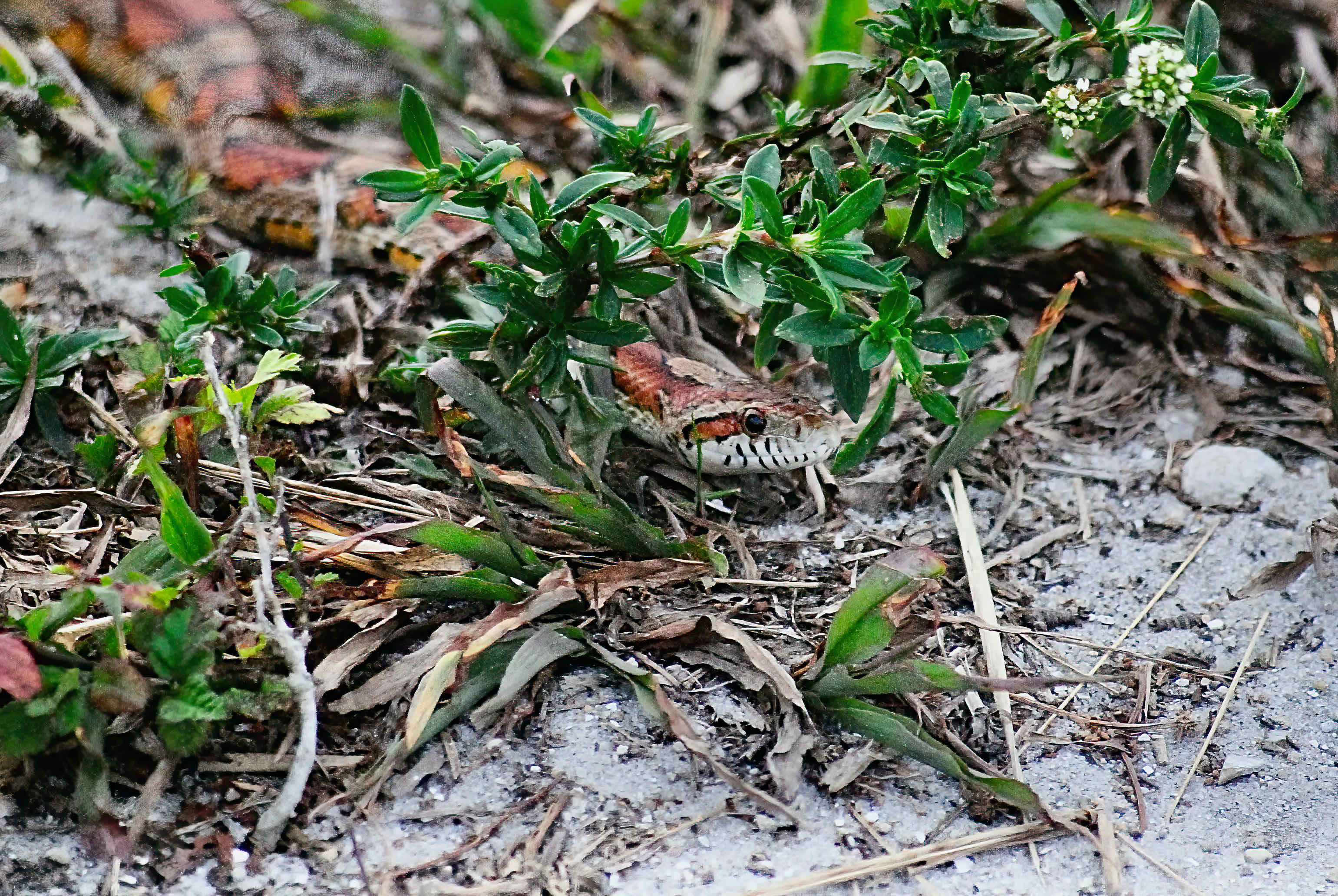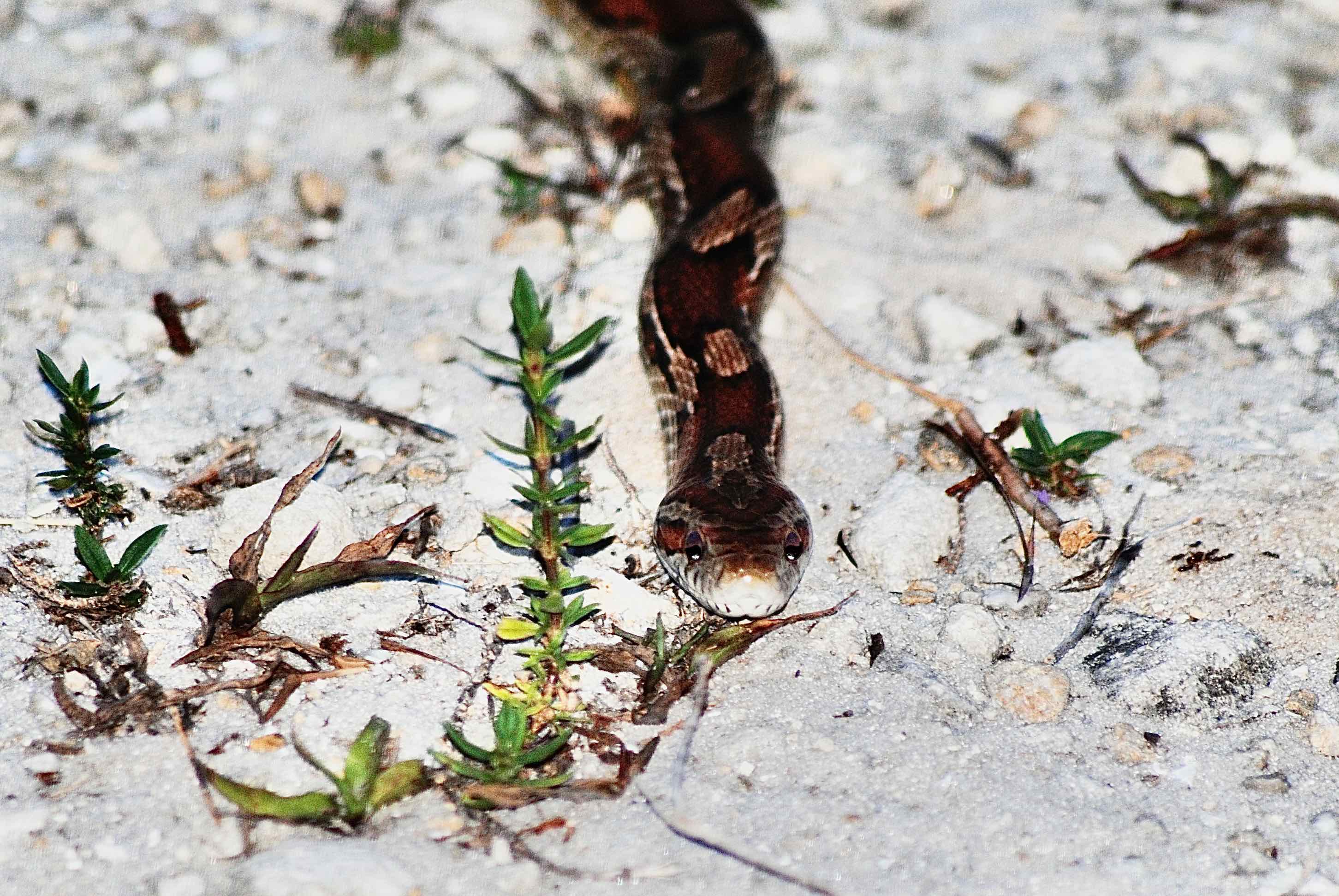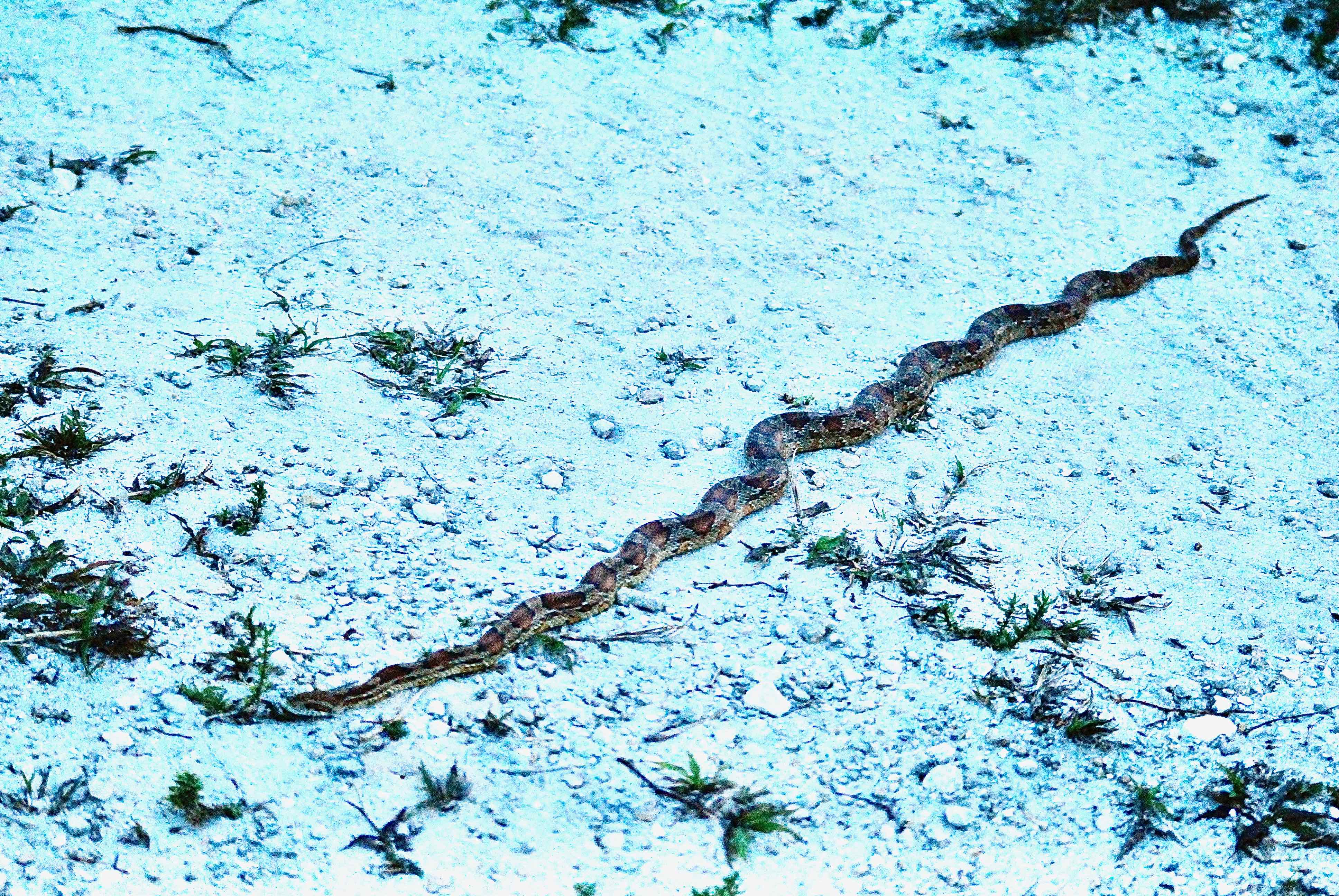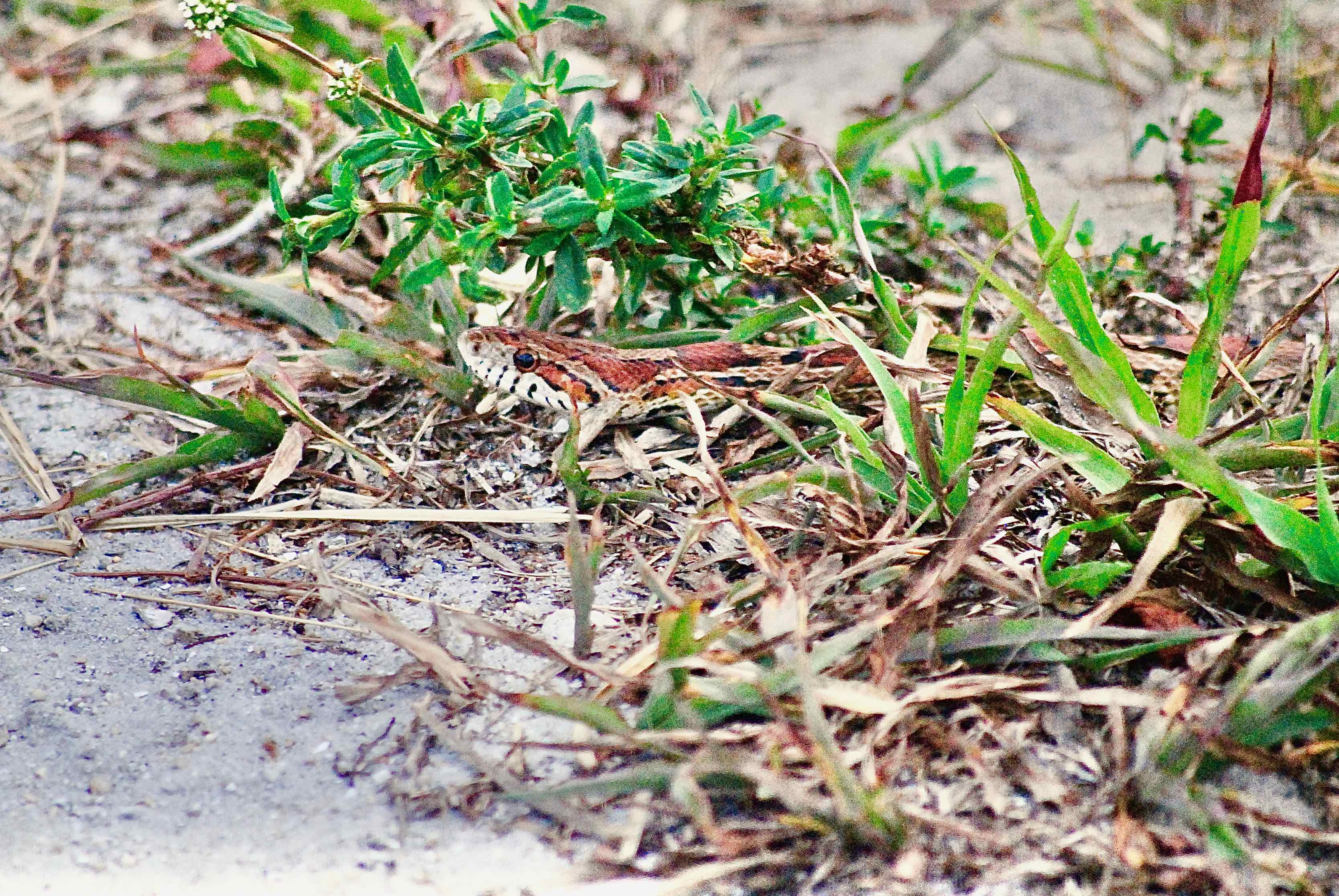
Corn snake, photographed near sunset at the Arthur R. Marshall Loxahatchee National Wildlife Refuge, Boynton Beach Palm Beach County, in May 2014.
Corn snakes, Pantherophis guttatus, get the name from their habit of hanging out in corn cribs. For them, it's like hanging out at a fast-food joint, the perfect place to grab a quick meal.
It's a fairly common snake, found throughout Florida, from the Panhandle to the Keys. Corn snakes are found throughout the eastern United States from the Mississippi River to the Atlantic Coast as far north as New Jersey. There are introduced populations in the Caribbean, Europe, Hawaii and in other states beyond their native range. They got there either as stowaways on ships or trucks via the nursery trade or as pets.
Corn snakes don't eat corn, of course, but mice and rats do, and rodent is definitely on the corn snake's menu. Back in the day, farmers would store corn in structures called cribs, with slats that allowed air to circulate and dry their harvest for processing. The corn would attract mice and rats, which in turn, would attract the snakes. We're guessing between the two, farmers preferred the snakes' presence over the rodents'.
Corn snakes are harmless to humans, i.e. they are non-venomous. They kill their prey by constriction. Also on their menu: frogs, lizards, birds and bird eggs. (Note: Snakes are either venomous or non-venomous. Calling them poisonous or non is incorrect.)
Generally speaking, an adult corn snake is between two and four feet long, but can be smaller and, on the other side of the spectrum, can hit six feet. A variant found in the lower Florida Keys — from Bahia Honda southward — is smaller than corn snakes found elsewhere. The Keys variant, called the Keys corn snake or rosy ratsnake, is protected by state law. They have less of the black markings of other corn snakes and are paler overall.
Corn snakes are generally are orange-brown, with orange, red or brown blotches that have a black border. They do vary in color, but they all have a V-shaped pattern on top of their heads.
They are nocturnal animals, who will burrow into the ground or hide under rocks and logs to pass the daytime hours. At the same time, they are accomplished tree climbers, considered by some to be the best climbing snake in Florida (another reason why cribs were a perfect place for corn snakes to hang).
Corn snakes make their homes in a variety of habitats, including pinelands, hammocks, swamps and fields. You might find one in your back yard, or even your attic. Loss of habitat isn't a threat — corn snakes are quite adaptable — but human activity is, specifically poaching and collisions with automobiles. Hurricanes also pose a threat because of storm surge and flooding that can destroy their burrows and that of their prey.
They breed in April through June, with females laying as many as two clutches with anywhere between three and 40 eggs each. Clutches of the Keys variant tend to be on the smaller end. They hatch between July and September. Corn snakes have been known to live as long as 32 years in captivity; their lifespan in the wild is much shorter.
Corn snakes are probably the cause of more false "sightings" of Burmese pythons than any other snake, but the resemblance between the two really isn't all that close.
Other names include eastern corn snake, chicken snake and red rat snake. It is a member of Colubridae, the largest snake family on the planet.
Arthur R. Marshall Loxahatchee National Wildlife Refuge



